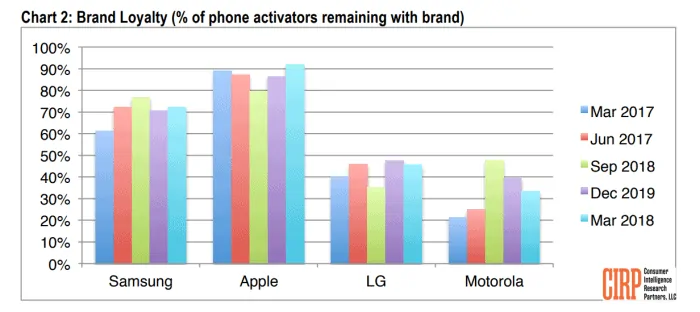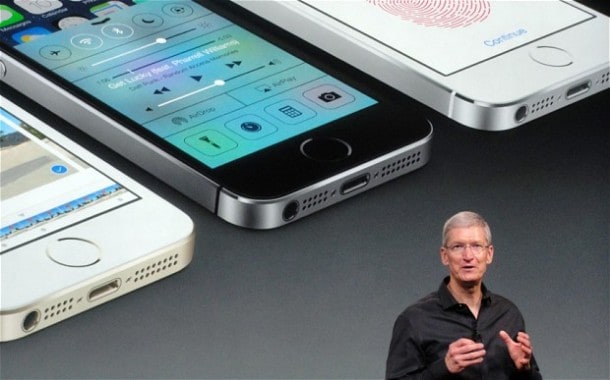The people have spoken. They love — looooove — their iPhones!
At least if the latest brand loyalty report by CIRP (Consumer Intelligence Research Partners) has anything to say about the matter.
For the quarter ended March 2018, phone activators remaining with the Apple brand (CIRP’s definition of brand loyalty) exceeded 90%. That’s the best result for the iPhone in over a year; the worst recent result happened in Q3 when loyalty dipped to 80%.
Meanwhile Samsung saw a small increase in loyalty to start 2018, peaking just above 70% for the quarter.
Trailing the giants by a large margin were LG (45%) and Motorola (32%), both of which suffered declines in loyalty quarter over quarter.

The overall trend long-term, however, is increasing loyalty to a single brand. It seems once a customer buys and likes the experience with an iPhone or Android phone, they’re more likely to stick with the brand during the next upgrade cycle.
“We see increasing brand loyalty, following the long-term gains in operating system loyalty,” said Mike Levin, Partner and Co-Founder of CIRP. “Apple customers have historically been very loyal, with 80-90% or more of customers upgrading from one iPhone to another. Now we see increasing loyalty with other brands as well. Samsung has seen loyalty rates over 70% for the last year, and LG and Motorola added several percentage points to their respective loyalty rates. For a long time, Android owners remained loyal to Android. Yet, they often chose to switch brands, which they could do without learning a new operating system. As fewer unique features are added to flagship phones, and brands have developed personalities with consistent user interfaces, consumers have fewer reasons to change brands, and more reasons not to when they upgrade phones.”
Makes sense to me. I’d suggest we’re at operating system parity. It’s 2018 and there’s little to differentiate phone experiences these days. Apps are about the same. Notifications… pretty much same. Camera. Battery life. Games. Display quality. All of these things which in the past saw significant differences from one model to the next are pretty much on par across brands. Sure, there are some unique features from one phone to the next — and Google, Apple, Motorola, LG and others are trying to emphasize those as much as possible to get a potential buyer to convert — but for the most part this is a game of shrinking returns when it comes to significant differentiation.
Basically, if you’re a happy Apple user you’ll stay Apple. And if you’re a happy Samsung user you’ll stay Samsung.
My guess is that the big techs will increasingly turn to services to lure new customers. Things like streaming music and video, cloud features like storage and sync, news and magazines and other extras. Amazon Prime set the lead here with its Prime service — an all-you-can-eat buffet of fast deliveries and extensive cloud services. Soon, I’d expect Google and Apple and others to follow suit (without the shopping piece mind you) and also bundle extended service offerings along with hardware devices. To some extent this already happens. When you buy an iPhone you get some cloud storage and free email, etc. But I’m expecting the industry to take the next logical step. Soon, who knows, maybe the handset will be free and you’ll pay monthly fees for music, video, books, magazines that could come pre-bundled.
Regardless, for now we know that there appears to be less brand switching when it comes to phones, at least when it comes to Apple and Samsung.


